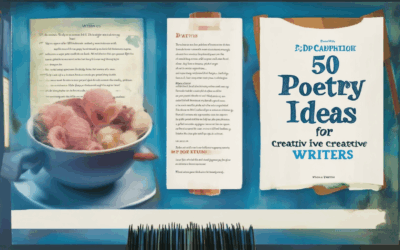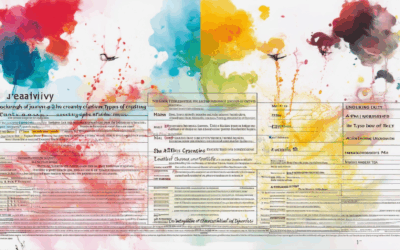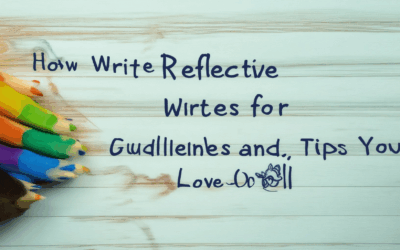Unlock your creative potential and elevate your submissions with expert poetry ideas tailored for success. Whether you’re a seasoned poet or just beginning, discovering the right themes, formats, and structures can transform your work from ordinary to extraordinary. This guide delves into proven strategies, essential tips, and actionable insights to help you craft compelling poems that stand out. From choosing the perfect theme to mastering poetic devices, we’ll explore everything you need to know to excel in poetry submissions. Dive in and unlock your creativity today!
Key Takeaways
– Harness the power of the “Six S’s” of poetry to craft engaging, creative works that captivate readers and stand out in submissions.
– Master monorhyme (“aaaa”) to add emotional depth and simplicity to your poems, making them memorable and relatable.
– Explore the rhyme royal septet to create structured yet flexible poems that resonate with traditional and modern audiences alike.
– Understand the importance of poetry structure and how it enhances your creative process, whether you’re aiming for submission success or personal expression.

Which Topic Is Best For Poetry?
Poetry offers a vast array of possibilities for exploration, allowing writers to express themselves uniquely. Here are some of the most compelling themes and ideas for poetry:
Nature
- Seasons: Explore the beauty and changes of each season, capturing the essence of renewal and cycles of life.
- Elements: Delve into the elements—earth, water, air, fire—and their symbolic meanings in nature.
- Animals: Use animals as metaphors or symbols, reflecting their behaviors and interactions with the world.
- Landscapes: Describe landscapes that evoke emotions or tell stories, like mountains, forests, or deserts.
Personal Experience
- Journey: Reflect on personal travels, adventures, or life experiences, weaving them into a narrative.
- Challenges: Share struggles, triumphs, or lessons learned, offering insight and resonance.
- Family: Explore relationships with family members, capturing memories and emotions.
- Friends: Depict friendships, highlighting shared experiences and bonds.
Love and Relationships
- Unrequited Love: Convey the ache and longing of unfulfilled affection.
- Lost Love: Mourn or remember past relationships with poignancy.
- Love in Bloom: Celebrate the joy and beauty of romantic connections.
- Friendship: Illustrate the depth and significance of enduring friendships.
Social Issues
- Inequality: Address societal inequalities and advocate for change through powerful imagery.
- Environmental Concerns: Highlight the impact of environmental issues and call for awareness.
- Diversity: Showcase the richness of human diversity and cultural heritage.
- Community: Explore themes of belonging, unity, and collective identity.
Personal Growth
- Overcoming Adversity: Document resilience and transformation in challenging times.
- Self-Discovery: Reflect on personal evolution and the journey toward self-awareness.
- Goals: Envision aspirations and the steps taken to achieve them.
- Mistakes: Acknowledge and learn from past errors, showing growth.
Seasonal Themes
- Spring: Symbolize rebirth and renewal, capturing the spirit of renewal.
- Summer: Depict warmth, sun, and vibrant life, along with associated freedoms.
- Autumn: Explore the beauty of fading leaves and the bittersweet nature of endings.
- Winter: Represent quietness, reflection, and preparation for new beginnings.
Historical Reflection
- Historical Figures: Portray influential people, examining their lives and legacies.
- Events: Re-examine significant historical events through a contemporary lens.
- Cultural Heritage: Celebrate traditions, customs, and the evolution of cultures.
- Legacy: Contemplate the lasting impact of historical figures and events.
Daily Life
- Ordinary Moments: Capture the beauty in everyday tasks and routines.
- Simple Pleasures: Highlight small joys and satisfactions in life.
- Routine: Explore the rhythm and order of daily life, finding artistry in routine.
- Work/Life Balance: Reflect on the dance between productivity and leisure.
Spirituality and Mysticism
- Existence: Contemplate the meaning of life and humanity’s place in the universe.
- Purpose: Explore the quest for meaning and the reasons behind existence.
- Mystery: Delve into the unknown, the supernatural, and the enigmatic aspects of life.
- Inner Journey: Reflect on the process of self-discovery and spiritual growth.
Each of these themes offers a unique avenue for exploration, allowing poets to express their individual voices and perspectives. Whether focusing on personal experiences, nature, or broader societal issues, poetry remains a powerful medium for storytelling, emotion, and introspection.
How to Format a Poem for Submission
To ensure your poem meets submission standards, follow these formatting guidelines:
1. Title
Include a title for your poem. Center it and place it on the first page.
2. Line Spacing
Use double spaces between stanzas and lines. Most submissions require this format.
3. Indentation
Indent each line of the poem approximately three spaces (or tab) from the left margin.
4. Poem Section
Place the poem title, followed by your name, on separate lines below the poem. Include a brief bio or notes about the poem’s themes if applicable.
5. Submission Guidelines
Check the submission platform’s guidelines for specific formatting requirements, such as file formats (.docx, PDF) or line breaks.
Additional Tips
Keep your poem concise and well-written. Proofread for errors and ensure proper formatting before submission.
By following these steps, your poem will be presented professionally and increase its chances of acceptance.

Crafting Thoughtful Titles for Your Poetry Submission
When titling your poetry submission, aim for clarity, originality, and resonance with your work. Consider the following guidelines to create a compelling title:
- Reflect Themes or Emotions:** Choose a title that mirrors the themes or emotions explored in your poems. For instance, if your poems revolve around nature, try “Whispers of the Forest.”
- Group Poems with a Common Element:** If your submission includes multiple poems, consider a title that ties them together. For example, “Echoes of Love and Loss” unifies poems on related themes.
- Avoid Clichés:** Steer clear of overused phrases. Use metaphors or symbols meaningful to your work, like “Feathered Echoes,” to add uniqueness.
- Consider Style and Audience:** Tailor titles to the magazine’s style. Traditional magazines may prefer classic titles, while edgier ones might suit experimental works.
- Use Numbers or Symbols Sparingly:** Incorporate numbers or symbols thoughtfully, like “Five Voices,” if your poems naturally group into a set.
- Ensure Flow and Rhythm:** Opt for titles that sound pleasant and have a natural rhythm, such as “Dancing Shadows,” to enhance readability.
- Revise for Fit:** Don’t hesitate to refine your title if it doesn’t capture your work accurately. A strong title is worth the effort for a lasting impression.
Remember, a well-crafted title enhances your submission’s appeal and provides insight into your creative vision. Take the time to find one that truly resonates with your poetry.

The Six S’s of Poetry
The six S’s of poetry are:
- Speed : The pace at which the poem unfolds, balancing quick verses with slower ones.
- Sound : The musical quality of words and their rhythm, contributing to the poem’s tone.
- Syntax : The structure and arrangement of words, affecting how the poem is read and understood.
- Surprise : The element of unpredictability that keeps the reader engaged and intrigued.
- Sense : The meaning conveyed through words, often beyond their literal definition.
- Space : The layout and spacing of text on the page, influencing visual interpretation.
Understanding “Aaaa” in Poetry
In poetry, “aaaa” refers to a rhyme scheme known as monorhyme. This scheme is characterized by all lines in a poem or stanza ending with the same rhyme. Each line follows the “aa” pattern, creating a consistent and repetitive sound effect.
Examples of Monorhyme
Here are some examples of monorhyme in poetry:
- 🌸 In the quiet of the night, she sleeps,
Her dreams take flight, among the sheets. 🌸 - 🌸 The sun dips low, casting golden light,
Upon the fields where battles fought so hard. 🌸
This structure allows the poem to maintain a uniform rhythm and emotional tone throughout, often evoking a sense of simplicity or introspection.
Comparing to Other Schemes
While monorhyme is a simple structure, it contrasts with other schemes like the ABAB or ABCB patterns, which introduce more complexity and variation. Unlike chain rhyme, which builds upon itself, monorhyme focuses on repetition for emphasis and consistency.
The Effectiveness of Monorhyme
Monorhyme can be particularly effective in conveying emotions or creating a mood, as the repetition reinforces the theme of the poem. It’s a versatile tool that can be used in various poetic forms, from limericks to haiku.
Explore more poetic structures and tips on Silken Drum to enhance your own writing.

What Are 7 Lines in a Poem Called?
A group of seven lines in a poem is referred to as a ” septet .” Among the various types of septets, one notable variation is the ” rhyme royal .”
Rhyme Royal Structure
A rhyme royal typically follows this rhyme scheme:
ABAB CDCD EFEF GG
This pattern is characterized by a consistent alternation of rhymes, creating a balanced and melodic flow in the poem.
Historical Context
The rhyme royal has historical significance, particularly in English poetry. It was commonly used in serious and formal compositions during the Renaissance and beyond. Poets like John Donne and George Herbert employed this structure to convey profound themes and maintain a classical aesthetic.
Flexibility in Modern Poetry
While the rhyme royal offers a structured approach, contemporary poets often deviate from strict adherence to this pattern, allowing for greater creative freedom and experimentation with verse forms.
Benefits of Understanding Rhyme Schemes
Understanding rhyme schemes like those in the rhyme royal enhances appreciation for poetry and aids writers in crafting meaningful verses. It also promotes creativity by offering frameworks for exploring diverse poetic styles.
Conclusion
In summary, a seven-line stanza in a poem is known as a septet, with the rhyme royal being a distinctive example characterized by its specific rhyme pattern.




0 Comments